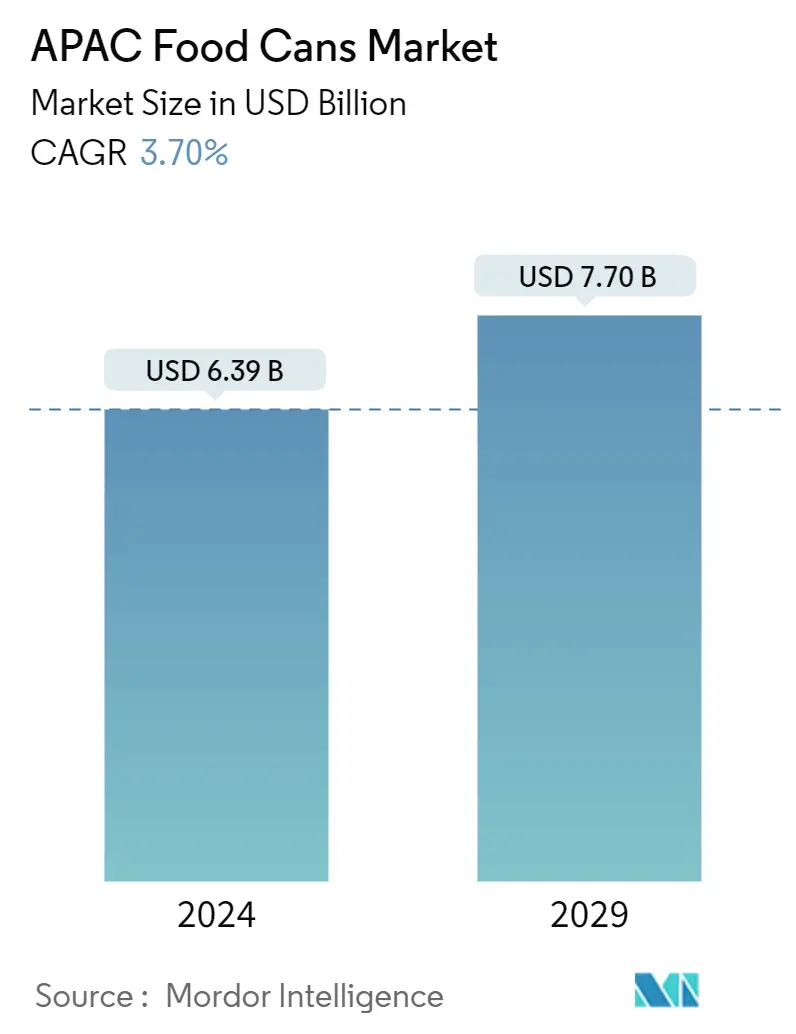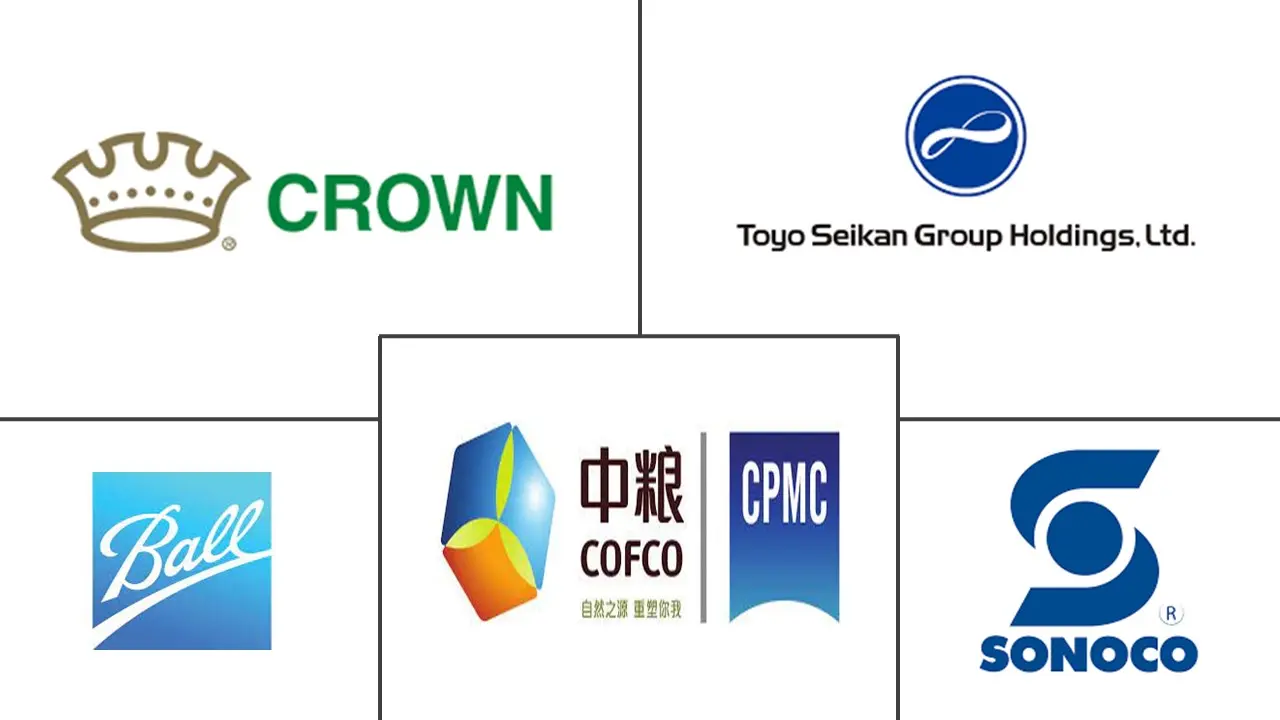Market Size of APAC Food Cans Industry

| Study Period | 2019 - 2029 |
| Base Year For Estimation | 2023 |
| Market Size (2024) | USD 6.39 Billion |
| Market Size (2028) | USD 7.70 Billion |
| CAGR (2024 - 2029) | 3.70 % |
| Market Concentration | Low |
Major Players
*Disclaimer: Major Players sorted in no particular order |
Need a report that reflects how COVID-19 has impacted this market and its growth?
APAC Food Cans Market Analysis
The APAC Food Cans Market size is estimated at USD 6.39 billion in 2024, and is expected to reach USD 7.70 billion by 2028, growing at a CAGR of 3.70% during the forecast period (2024-2028).
Metal cans play a vital role in preserving food without microbiological spoilage. The cans are corrosion-resistant and have the extended shelf life of any package. Its advantages include stiffness, stability, and strong barrier qualities.
- One of the primary drivers of the market is an upsurge in demographic population, increased consumption of canned food to account for the busy and modern lifestyles, increasing demand for easily accessible and transportable food, the increased necessity to expand the shelf life of food, and an increasing number of pet owners demanding canned pet food.
- According to the International Monetary Fund, solid growth in emerging markets in Asia is anticipated to continue. According to the IMF, annual Gross Domestic Product (GDP) growth of 4.6% for emerging and developing Asia in 2022 will be increasing to 5% in 2023. By investing in research and development, boosting entrepreneurship, and strengthening digitalization, Asian countries can foster sustainable, long-term growth. Such growth in the economies would further leverage the canned food market as more individuals will be working and prefer ready meals.
- Consumer trends, such as a choice for small-size and multi-pack packaging formats, support the volume growth of aluminum cans, especially for the ready-to-eat food segment. Hence, most of the companies across the emerging regions offer mini-cans, which usually contain smaller volumes of products at less cost than traditional canned products. For instance, food innovations in canned seafood in Southeast Asia are witnessing growth. As a seafood provider, Thai Union announced it would launch a plant-based canned tuna per the rising consumer demand.
- The presence of alternatives like plastic packaged food, which is cost-effective but has a lesser shelf life, restricts the market's growth. Despite not being durable, plastics are still gaining demand over glass and metals in terms of energy consumption, reliability, and sustainability. Also, the material is flexible and can be molded into any shape as required.
- The food industry, with a significant share in the can packaging market, has witnessed massive demand during the COVID-19 pandemic, as the initiative falls under the essential commodity. The lockdown enforced across the region due to the COVID-19 pandemic has significantly changed consumption habits. There has been an increased demand for packaged food products, meat, vegetables, and fruits. Packaging designs and materials that address hygiene and consumer safety concerns minimize the possibility of the survival of the virus on the packaging material, which is expected to be a mandatory factor when deciding on the packaging material. Hence, the adoption of metal packaging is anticipated to rise owing to its chemical properties.
